Novatel Wireless MiFi 4510L Review - The Best 4G LTE WiFi Hotspot?
by Brian Klug on July 14, 2011 5:20 AM ESTPhysical Comparisons
The 4510L is a fair amount chunkier than the 2200 in photos as well, though it retains roughly the same credit-card outline. To me, the old 2200 always felt a bit too light, if that’s possible. I’ve carried the 2200 around at a number of different conferences and always wound up constantly patting my pockets to make sure it was still there - the 4510L definitely remedies that problem, if you could call it one.
Industrial design is changed as well. The old Verizon MiFi was flat black and relatively spartan. I like many others opted for the then-unlimited Virgin Mobile version (before unlimited finally ended) which has a faux-aluminum textured plastic topside, and the same soft touch underside.

The original MiFi 2200 on Verizon
The new 4510L is considerably less understated than that old flat black model, including a chrome lip around the edge, chrome recessed power button, shiny plastic lid, and an e-ink top display.
The e-ink display shows battery status with four gradations, signal strength with four, and the up to five connected clients using small circles at the bottom. There’s also a roaming triangle indicator, and I’m led to believe a target symbol for when GPS is active, though I’ve never seen those last two appear. There’s no network status indicator on the e-ink display (that is to let one differentiate between EVDO, 1xRTT, or LTE), for that, you need to use a good-ol’ LED.
Approximately where the old 2200 placed its status LED is where the 4510 has its own. The status LED blinks when there’s network traffic (a constant rate, not proportional to traffic throughput), and is solid when idle. The actual connectivity state is communicated using color - it’s purple when connected to 1x or EVDO, and green when connected to LTE. Unlike the old 2200 software, there’s no way to disable the LED, which can get pretty annoying when working in a dark lair, er... office.
It also just seems a bit confusing to have an LED at all, since on one hand you could make the argument that Novatel went with the e-ink display to cut down on power consumption. No doubt it does make a difference, but then we have a LED below it which blinks endlessly during normal use, and can’t be disabled. No doubt to make the e-ink displays affordable, Novatel had to use a display with segments that could be used across its product lineup. There simply isn’t space to have LTE, 1xRTT, EVDO, GPRS, EDGE, UMTS, HSPA (with and without +) indicators on the e-ink display without possibly using two character, fourteen-segment displays.
The other interesting challenge that having an e-ink display poses is that when you pull the battery, the display indicators persist indefinitely. Only a clean power off (achieved by holding the button down for five seconds until the LED turns solid yellow) clears the display entirely. I find that the power on and power off scheme on the 4510L is confusing and counter-intuitive. Turning the device on simply requires pressing the button one short time (even a quick tap does it), but turning it off takes a longpress. The LED color also flashes yellow happens when the 4510L is charging but not turned on.
The underside of the 4510L is just like the old 2200 and coated in a soft touch black material. There’s a battery release button which lets the battery cover pop off and slide back. I’m surprised that Novatel is still putting the default SSID and password on the outside of the box. It seems pretty obvious that this should go on the inside cover, or better yet, below the battery, especially considering how many default configured portable hotspots of all kinds I see floating around, but I digress.
The 4510L carries a 5.6 Whr battery which is close in size to the SCH-LC11’s 5.55 Whr, and considerably larger than the old 2200’s 4.25 Whr. It’s a different size and shape, so there’s no reusing your old batteries, though there are several extended capacity third-party batteries already on the market for the 4510L.
Underneath that battery is of course the SIM slot. Getting that SIM out requires pressing a plastic tab down, similar to what I’ve seen with other Novatel Wireless modems.
Inside the 4510L box is a seriously beefy 5.5 watt USB charger which isn’t quite pocketable due to its shape, but should provide ample power for quick charging. Something a bit more slimline or amenable to travel might be preferred, but a charger that cranks out 1.1 A is also good, even though charging time is an advertised 2.5 to 3 hours. Also in the bag is a USB cable with an interesting sticker which reads “The USB cable is only for software upgrades.” That pretty much sums up USB connectivity, which doesn’t include device-as-modem support. You can charge over USB (and ostensibly update firmware) but not much else. That pretty much sums up the 4510L’s hardware aesthetics.


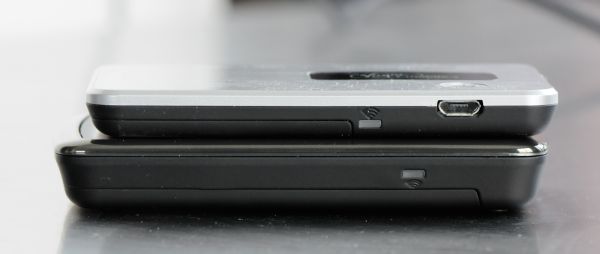

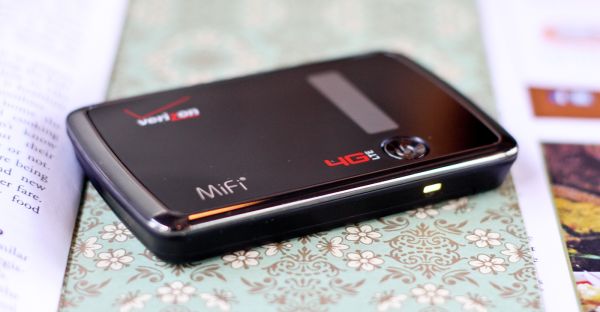
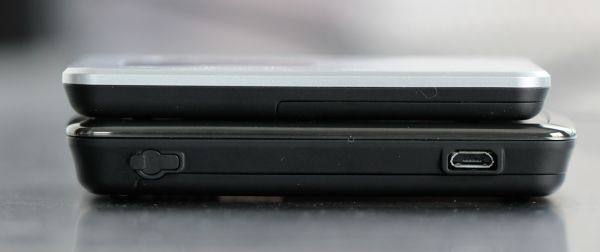
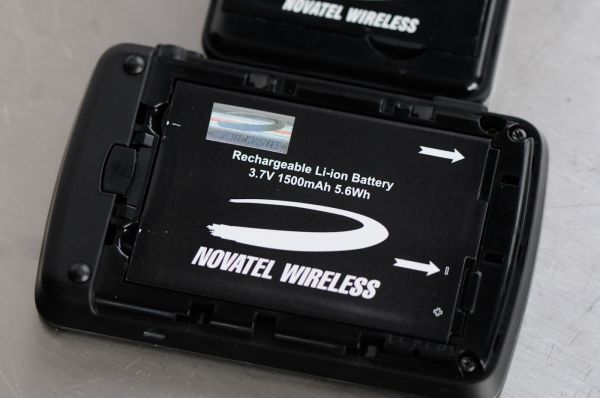

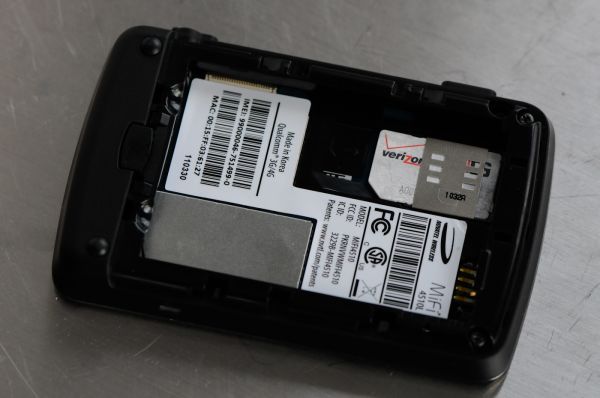








24 Comments
View All Comments
jigglywiggly - Thursday, July 14, 2011 - link
What's the point of this if the max data thing you can get is 10gb?Brian Klug - Thursday, July 14, 2011 - link
I really think that Verizon is testing the waters to see what will stick when it comes to their pricing. At this point, $80 for 10 GB is... well, too much, really. At least for me personally.-Brian
testprof - Thursday, July 14, 2011 - link
Brian,Perhaps you could do a follow-up comparison to the Sprint MiFi 4082. The Sprint furnished configuration appears to be much more extensive than what you show for the 4510L. The lack of a robust configuration for WiFi is a shortcoming, but is not a problem for me, as I do not attend many large gatherings... I use it principally for updating test systems in the field that have no corporate network connections for security reasons. The 4082 has a MicroSD slot for up to 32GB and supports file sharing, active on-board GPS, USB tethering, and has application widgets. I would prefer the Verison LTE network for its better coverage, but cannot complain about the single price unlimited 4G on Sprint. I am disappointed at the 5GB cap on 3G and the incredible level of overage costs if you exceed that. It is $0.05 per megabyte of data. That's $51.20 per gig!!!
Luscious - Thursday, July 14, 2011 - link
Have you taken a look at Clearwire's Clear Spot 4G mobile hotspot? They charge only $45/month (or $50 with a business plan that includes a QoS contract) and let you use unlimited 4G (no caps).My monthly usage falls around 25GB, so at 10GB Verizon's LTE service is in my case overpriced and insufficient. If carriers insist on caps they should raise them!!! 25GB should be the minimum for one month of laptop tethering.
I'm confused though why you want 5GHz in a hotspot when netbooks and notebooks still ship with 2.4Hz radios inside. I don't fancy a wifi dongle sticking out the side of my device, and if interference were an issue, plugging in via USB would solve that.
wpellis - Thursday, September 1, 2011 - link
To Luscious last comment, the point is that you have flexibility to seamlessly share that internet connection with multiple laptops, devices, etc.schmitt - Tuesday, September 13, 2011 - link
iPads ship with 2.4 GHz and 5 GHz.schmitt - Tuesday, September 13, 2011 - link
I was a Clearwire customer and used the iSpot. But, their 4G coverage in Vegas was bad. So, I gave the iSpot to a friend and cancelled the service. They will throttle your speeds.This is from Clearwire's website:
ACCEPTABLE USE POLICY
Effective August 22, 2011
Unlimited Use Plans. If you subscribe to a service plan that does not impose limits on the amount of data you may download or upload during a month (or other applicable service period), you should be aware that such “unlimited” plans are nevertheless subject to the provisions of this AUP. What this means is that all of the provisions described in this AUP, including those that describe how Clearwire may perform reasonable network management such as reducing the data rate of bandwidth intensive users during periods of congestion, will apply to your use of the Service. The term “unlimited” means that we will not place a limit on how much data you upload or download during a month or other particular period. However, the term “unlimited” does not mean that we will not take steps to reduce your data rate during periods of congestion or take other actions described in this AUP when your usage is negatively impacting the Internet experience of other subscribers to our Service.
gonna621 - Thursday, July 14, 2011 - link
I upgraded from my 3G to this 4G. The 3G worked great, this thing sucks ass. It does not work with 4G because there is not enough 4G cell sites in my area. It did not work at all when I first got it, because it was hunting for a 4G signal. Tech support had to force it to stay on 3G for it to work.It turns itseld off several times and day and has to be constantly reset.
You can connect to it and it does not tell you that it is not connected to the internet.
I tried to take it back but they won't accept it.
DON'T BUY THIS PRODUCT IT IS A RIP OFF AND VERIZON DOES NOT STAND BEHIND ITS PRODUCT
ggathagan - Friday, July 15, 2011 - link
Verizon is certainly to blame if you're disappointed with the 4G coverage in your area.The fact that there are not enough 4G "cell sites" in your area, however, has nothing to do with the 4510L.
biffsbiz - Friday, August 12, 2011 - link
Gonna621, You are correct, this device works poorly in CDMA, EvDo, & LTE areas. It drops connections continuously, it never shows a signal strength anywhere near what a MiFi 2200 shows, it cannot switch between CDMA, EvDo, & LTE, it is just a poorly functioning device. If you have a MiFi 2200 do not be fooled by it's ease of use and functionality into upgrading to the MiFi 4150L. Keep your 3G device until LTE software works with 1x, 3G & LTE properly. Biff